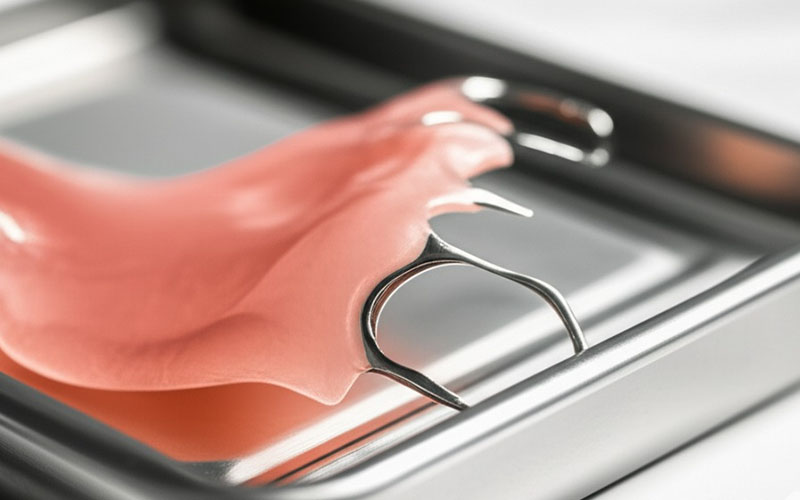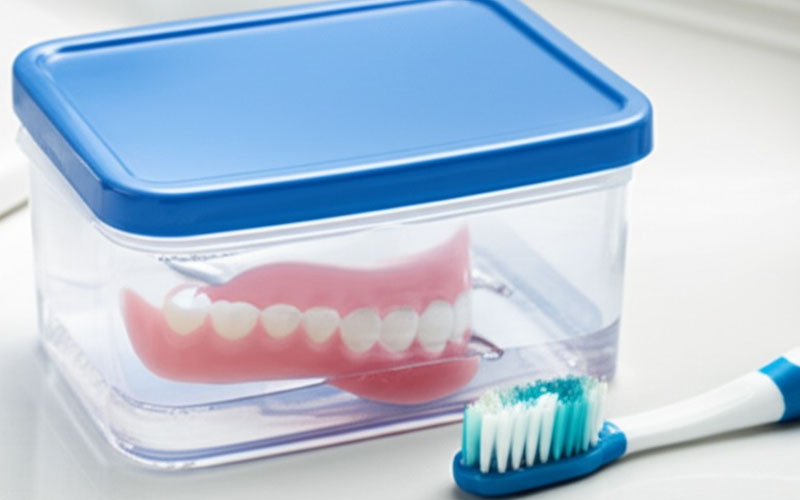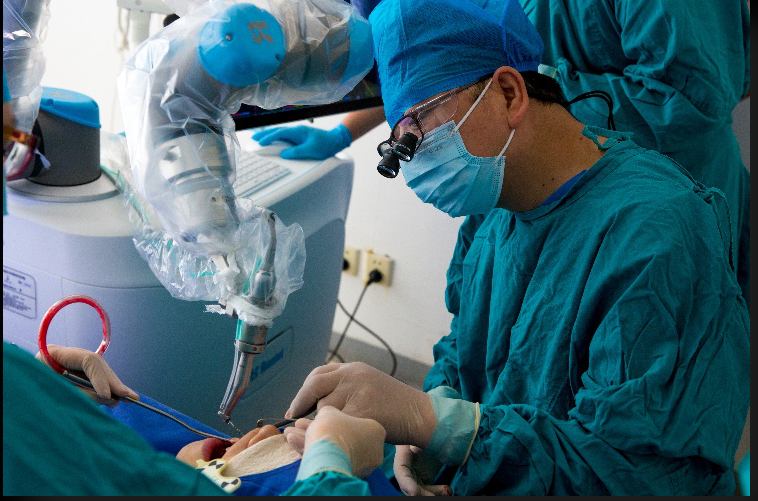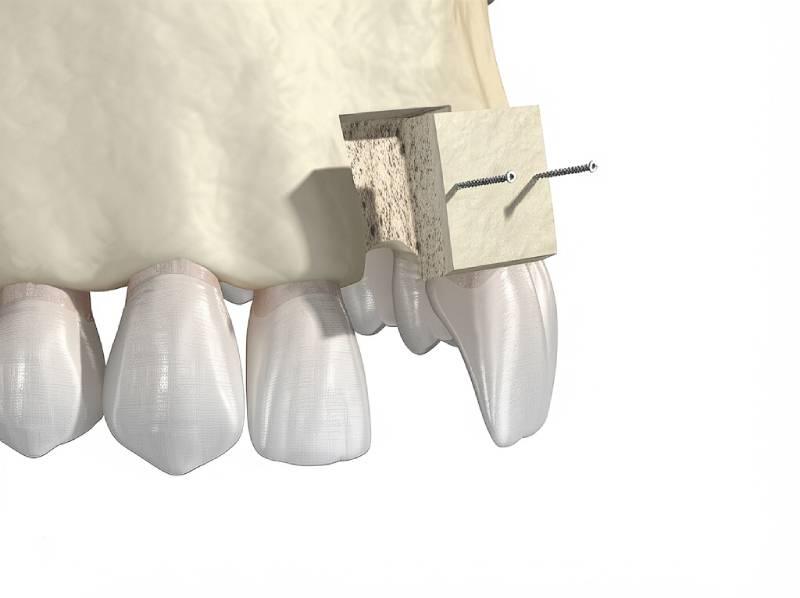
How Do Single Tooth Dentures Work? Your Guide to This Removable Solution
Lost a tooth and feel upset about how you look? Wondering how you can close the gap without surgery or spending a lot? This article explains single tooth dentures—sometimes called flipper dentures—how they work, how simple they are to use, and why they could be the easy answer you need.
Table of Contents
What Is a Single Tooth Denture?
A single tooth denture is a small tool that fits in your mouth to replace just one missing tooth. You can take it out whenever you want. A lot of people call it a “flipper tooth” or a “removable one-tooth denture.” Dentists usually offer these as a short-term fix if you lost one tooth, especially in the front where it really shows. They make your smile look better and help a little with chewing until you get something more long-lasting. But some folks use them for years.
Why does this matter?
Losing even one tooth can make you nervous to smile. Eating and talking can get harder, too. A single tooth denture fills that space, helps you feel better about yourself, and keeps your other teeth from moving around.
Why Do People Lose Single Teeth?
You can lose a tooth for lots of reasons. Maybe you know someone who fell and lost a tooth—or maybe it’s happened to you. Here are the most common reasons:
- Accident: You fall, get hit in the mouth, or have another mishap that knocks out a tooth.
- Cavities or gum trouble: Over time, these problems can make a tooth come loose or need to be pulled.
- Born without a tooth: Some are just born with one less tooth.
- Bad infection: Sometimes that tooth just has to go.
No matter how it happens, you end up with a hole in your smile and you need a good way to fix it.
How Do Single Tooth Dentures Stay in Place?
You might ask, “How does a single tooth flipper stay in without falling out?” Good question!
It’s actually pretty smart. Here’s how it holds on:
- Friction fit: The denture base sits tight against your gums, shaped to fit.
- Little clips (sometimes): Small wires or soft parts can wrap around nearby teeth. Some one-tooth dentures don’t need these, but they help it stay put.
- Custom made: The lab shapes it to fit your mouth just right.
- Sometimes, sticky paste: It gives a bit more hold if you want.
So you can eat and talk—they won’t fall out.
What Are the Main Parts of a Single Tooth Denture?
No matter the type, every single tooth denture has a few key pieces:
- Fake Tooth: Usually made from plastic or porcelain. Dentists pick a color and shape that looks like your real teeth.
- Plate (the pink part): This gum-colored bit holds the fake tooth and rests on your gums.
- Clips (sometimes): These can be see-through, tooth-colored, or tiny bits of metal to grip onto nearby teeth.
- No clips for Nesbit: If you’re missing a back tooth, this kind just pops into place using pressure from both sides.
So it’s like a puzzle piece just for your mouth.

What Types of Single Tooth Dentures Are There?
Not every one-tooth denture is the same. Here are your main choices:
- Acrylic Flipper Denture:
- Made from hard, pink plastic.
- Most common and lowest cost.
- Good for both front and back teeth.
- Valplast (Bendy) Denture:
- Made from bendy material, feels softer.
- Clips are harder to see.
- Good if you care about looks.
- Nesbit Partial:
- Mostly for back teeth.
- Doesn’t cover the roof of your mouth or the inside of your lower jaw.
- Pops in between your teeth and holds by pressure.
| Type | Best For | Main Things | Comfort | Cost |
|---|---|---|---|---|
| Acrylic | Any missing tooth | Classic, cheap | Good | $ |
| Valplast | Visible front teeth | Bendy, hard to see | Very Good | $$ |
| Nesbit | One back tooth | No roof of mouth plate | Good | $ |
How Do You Get a Single Tooth Denture Made for You?
Most dental offices make it pretty easy. Here’s what happens:
- Checkup: Your dentist looks at your mouth, sees the spot, and talks it out with you. If a single tooth denture sounds good, you’re on to the next step.
- Impression: They take a mold of your mouth using a squishy tray. This lets the lab make a true-to-life copy of your gums and teeth.
- Lab Work: Someone at the lab builds your very own denture, picking the right tooth color and fit.
- Try-On and Fixes: You try it out. The dentist tweaks it until it’s just right.
- Take Home & Learn How to Use: You leave with your new tooth and tips on how to use and clean it.
Tip: You might get it in a week or two. Sometimes, you can get a same-day one-tooth denture if you’re having a tooth pulled.
What Are the Benefits and Drawbacks of Single Tooth Dentures?
Let’s keep it honest. Every fix has some ups and downs. Here’s a simple look:
GOOD STUFF
- Fast & Cheap: You get your smile back right away without spending a lot.
- No Surgery: No cutting or anything painful—and your other teeth stay the same.
- Can Take It Out: Easy to clean and give your gums a rest.
- Perfect as a stand-in: Great while waiting for a bigger fix like an implant or bridge.
NOT-SO-GOOD
- Not as steady as fixed teeth: Sometimes moves or feels a little loose.
- Can affect eating or talking: First few days, some foods or words might be tough. Keep practicing!
- Food gets stuck: So rinse and brush often.
- Sore spots: If it rubs, get your dentist to fix it.
- Not forever: Most people don’t use these for life.
How Do You Take Care of Your Single Tooth Denture?
Want it to last and keep your mouth healthy? Here’s what matters:
- Clean It Every Day:
- Use a soft brush each night.
- Soak in denture cleaner or plain water—never hot water!
- Don’t forget to brush your own teeth and gums, too.
- Be Careful Putting It In and Taking It Out:
- Don’t force it; use both hands gently.
- Never bite it in place.
- Eating and Talking:
- Start with soft foods, cut small pieces.
- Read out loud to get used to talking with your denture.
- See the Dentist Regularly:
- Sometimes dentures need quick fixes.
- Dentist will check your gums and make sure everything fits right.
| What To Do | How Often | Tips |
|---|---|---|
| Clean denture | Every day | Soft brush, skip the toothpaste |
| Soak denture | Every night | Any denture soak from the store |
| Dental visit | Every 6 months | Dentist will check your mouth & fit |
Extra Tip: Take your denture out at night. Your gums need a break and it helps cut down on bad smells!

Single Tooth Denture vs. Implants and Bridges: Which Is Best?
At any dental clinic, you’ll hear about all your choices before you decide. Here’s how they stack up:
Dental Implants
- Good: Stays in for good. Feels and looks real. Keeps your jaw bone strong.
- Not so good: Costs more, needs surgery, long healing.
Dental Bridges
- Good: Stuck in place, strong bite.
- Not so good: Must grind down the two teeth next to the gap. Not removable.
Single Tooth Dentures
- Good: No surgery needed. Cheapest. Done fast.
- Not so good: You can take them out, not always as steady as the others.
| Option | Surgery? | Cost | Stays Forever? | Good for Kids? | Helps Bone? |
|---|---|---|---|---|---|
| Denture | No | $ | No | Yes | No |
| Implant | Yes | $$$ | Yes | No | Yes |
| Bridge | No | $$ | Yes | Maybe | A Little |
Which is best?
Depends on your money, health, age, and how long you want the fix to last. Talk it over with your dentist.
Who Should Get a Single Tooth Denture?
These are not for everyone, but they work great for:
- Kids and teens: Their mouths are still growing—have to wait for an implant.
- Grown-ups waiting for another fix: Need something while you wait for the next step.
- People who can’t have surgery: Your doctor says no to cutting or big fixes.
- If you’re on a budget: You want something easy and cheap.
Not sure if this is you? Dentist will look, ask a few questions, and help you pick the right fix.
How Much Do Single Tooth Dentures Cost?
Money’s always important. Here’s the usual range:
- Usual price:
- Flipper or plastic denture: $300 to $700.
- Valplast (bendy) can be $700 or more.
- What changes the price:
- What it’s made of (bendy costs more).
- Where you live (big city can cost more).
- Harder cases can cost more.
- Insurance might pay part of it.
- Most clinics let you pay over time.
Tip: Ask if your clinic does payments or helps with insurance. You might pay just a little out of pocket.
What Is It Like Living With a Single Tooth Denture?
Let’s set things straight. Most people get used to it pretty quick, but here’s what you might notice:
Eating
Feels strange at first. Eat soft foods and chew with both sides. You’ll move up to tougher foods after a while.
Talking
Some words come out funny to start—like “S” and “F.” Say them out loud, lots. Your tongue will figure things out soon.
Looks
If the dentist picks the right color and it fits well, most people won’t notice anything at all.
Feeling better
People smile more with no gap. That’s the boost a single tooth denture can give.
Case Studies and Real-Life Stories
Sarah’s Story
Sarah lost a front tooth riding her bike. She got scared about smiling at school or eating. Her dentist made her a flipper denture in two days. It looked just like her own teeth, snapped in quick, and stayed there. Now Sarah smiles all the time.
Mike’s Quick Fix
Mike needed an implant but had to pause for a few months. In the wait, he used a one-tooth flipper for his lower back tooth. It felt fine and was easy to take out at night. He could eat most foods and never missed work. The flipper made sure his teeth didn’t move, so his implant fit later on.
Grandma Addie’s Choice
Addie, 70, had health problems and couldn’t have surgery. Her dentist gave her a Valplast denture for one tooth. It was soft, matched her gums, and she could eat toast again!
FAQ
Q: How long does a single tooth denture last?
A: Most hold up one to three years. Take care of it, and it could go even longer.
Q: Will people know I’m wearing a flipper?
A: With good color and fit, most won’t notice a thing.
Q: What if my denture feels loose or sore?
A: Go back to your dentist for a quick fix! Don’t try to bend it yourself.
Q: Can I sleep with my denture in?
A: Take it out at night so your gums can breathe.
Q: Is it hard to eat with a flipper?
A: Takes practice. Start slow. Before you know it, you’ll hardly notice it.
Bullet Point Summary: Key Points to Remember
- A single tooth denture fills one gap and helps you smile.
- These are easy to take out, simple to clean, and cost less than most other ways.
- You can pick from plastic, bendy, or “snap-in” types.
- The denture fits your mouth and sometimes has tiny grips.
- Good care and regular dentist visits keep you healthy.
- Great for kids, anyone waiting for a bigger fix, or those who can’t do surgery.
- Talk to your dentist about what it costs, what it’s made of, and what’s best for you.
- Don’t let one missing tooth keep you from smiling. A little denture can work wonders!
For tips, help, or to book a visit, go to our Contact Page or call us today!








